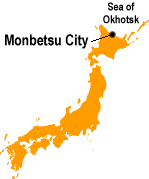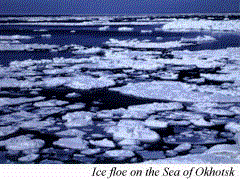

 |
||

|
An Annual Winter Drifter from the North
 The east coast of Hokkaido facing the sea of Okhotsk is a prime site for observing huge ice floes. On the north Russian coast of the Okhotsk Sea, the sea water starts freezing around the end of October. The masses of formed ice, growing thicker and extending their domain, float away to seasonal winds and sea currents, and reach the northeast coast of Hokkaido in January. The white pack on the sea keeps expanding for several months until 80 percent of the Okhotsk Sea is covered with ice floe by early March. During the season, you can take a close look at the ice on board an icebreaker, or you can take the slowest train in Japan, which travels along the Okhotsk coast at 30 kilometers (20 miles) per hour, giving you plenty of time to enjoy the views of the expanse of sea ice. The Ice Floes Research Laboratory, one of the institutions of the national Hokkaido University in Monbetsu City on the east coast of Hokkaido is the center for academic research of ice floes. Recent years have seen a growth in international collaboration research. Since 1986, Monbetsu City has hosted an annual international symposium on ice floes and frozen sea, and the joint research project involving Russia, the United States, and Japan will start in 1998. As this sea area is likely to be greatly influenced by global warming because of the existence of ice floes, this joint research may help explain global environmental issues as well. Photos: (Hokkaido Tourist Association) Unauthorized reproduction of the
photos in this page is prohibited.
Related Links: |
|

